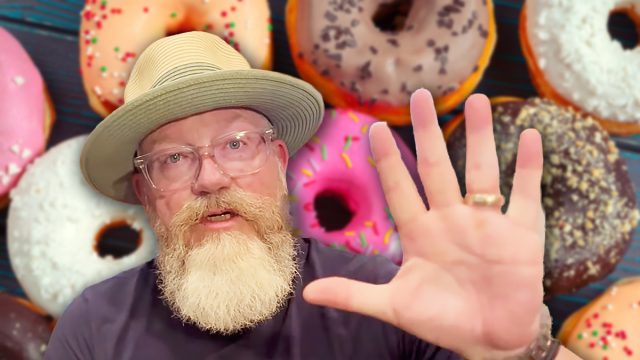10 Foods That I Will Never Eat Again After Losing 120 Pounds
Scott (@Becoming_Superhuman) is a social media influencer who lost a whopping 120 pounds. In his video, he reveals how he did it, "eating a low carb ketogenic diet, intermittent fasting, eating whole foods and cutting out processed foods." In one viral video, he discusses the food he learned to avoid. "Today we're going to talk about the ten foods I will never eat again. And it's not that I'll never eat them, but not gonna be on the regular," he says. "These are foods that I had to put on the Do Not Eat list when I was losing 120 pounds. Ten foods that remain on the Do Not Eat list as I try to maintain my 120-pound weight loss in the last 13 months."
Sugar
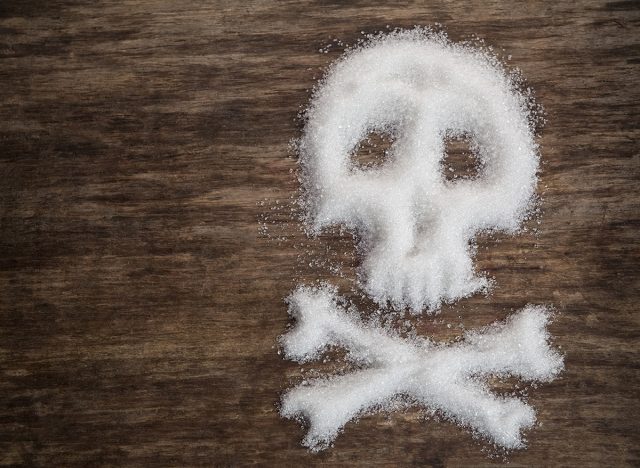
The "number one food" Scott cut out was sugar. "I mean, just, anything was sugar in it," he says. This includes ice cream, sweetened drinks, and pie. "I'll make some exceptions here and there," he says. However, when he does, he does so in moderation.
RELATED: 3-Part Walking Schedule That Melts Fat All Day Long
Processed Grains
Number two, food processed grains. "Our grains, our flour has been overly processed to the point where it's been bleached, it's been refined, they've basically removed everything from it except for gluten," he says. This takes out bread and pizza crust unless he makes a high-protein pizza crust out of egg white powder. "For the most part, I'm not going to eat pizza, and I'm not going to prepare pizza that often I like to cook. I like to do some things, but I would rather cook some meats, I would rather cook some eggs, I would rather cook these high protein things that are really, really good for me."
Seed Oils
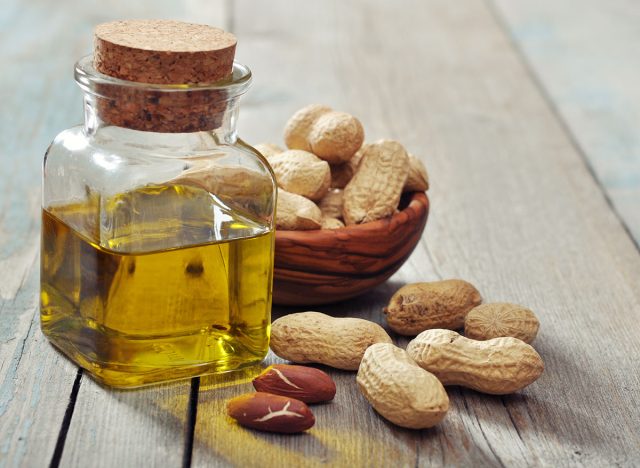
Number three on the list is seed oils, "basically all kinds of vegetable oils," he says, including safflower oil, peanut oil, sunflower seed oil, soybean oil" because they are highly processed. "They're heated up to a massive degree, put under high pressure, they are changed chemically, and they're bleached," he says. The oils does he use? Olive, coconut, and avocado, which are fruit oils. "Those oils are not highly processed. It's the same thing with ghee, butter, lard, and fat tallow. Those are good fats to cook with."
RELATED: 11 Quick Protein-Packed Breakfasts to Curb Cravings You Can Make in 5 Minutes
Ultra Processed Carbohydrates
Number four is ultra-processed carbohydrates, "things like boxes of crackers, chips, breakfast bars, cookies," he says. "Basically, in the middle of your grocery store aisles." He specifies that ultra-processed foods are things with "more than two or three ingredients on that box, maybe four or five for something that's pretty natural," he says.
Fast Food
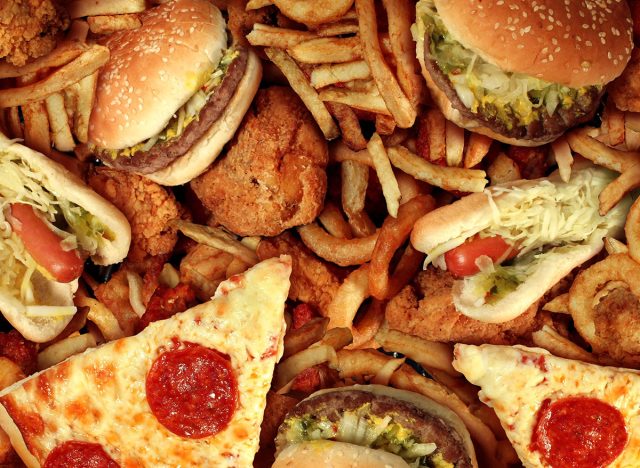
The number five food on the list is fast food. "The way those foods are processed in the restaurant, for the most part, they're full of seed oils, they're full of gluten, they're full of refined flours," he says.
Enchiladas and Tamales
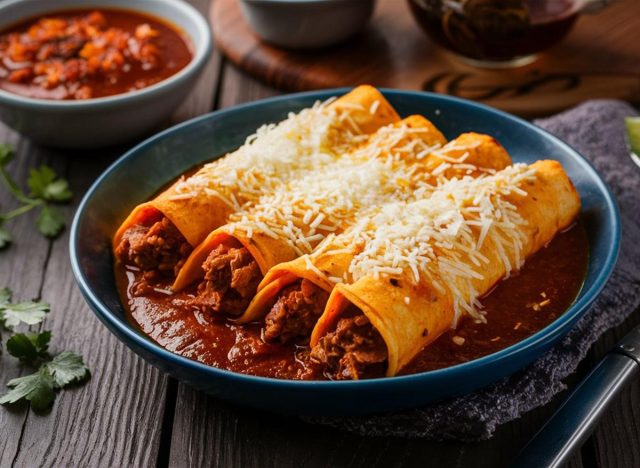
The sixth foods are enchiladas and tamales, "again, it's because of the ingredients," he says. "These things are made from the processed grains in our country, the masa, the flour that's being used, the cornmeal that's being used, and has been highly processed." They also have seed oils.
RELATED: 2 Expert Tips for Stubborn Fat Loss That Actually Work
Processed Salad Dressings
So the number seven-item on the list is processed salad dressings, "unless you look at the label and it says that they used avocado oil or coconut oil," he says. A lot of dressings are made with soybean oil, safflower oil, or canola oil. "They're not good for you. They shouldn't be consumed. They cause issues in our bodies. It causes inflammation in your body."
Soda
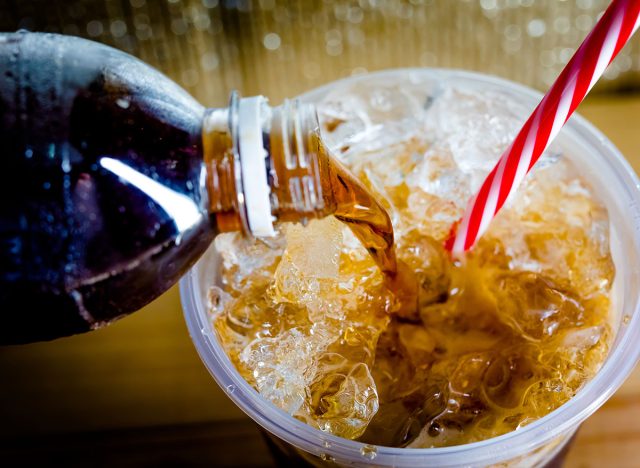
Number eight, soda — even diet. Soda contains sodium benzoate, "this chemical that once you consume it activates an enzyme, and that enzyme sends a signal to your brain and tells you not to burn fat right now," he says.
Cereal
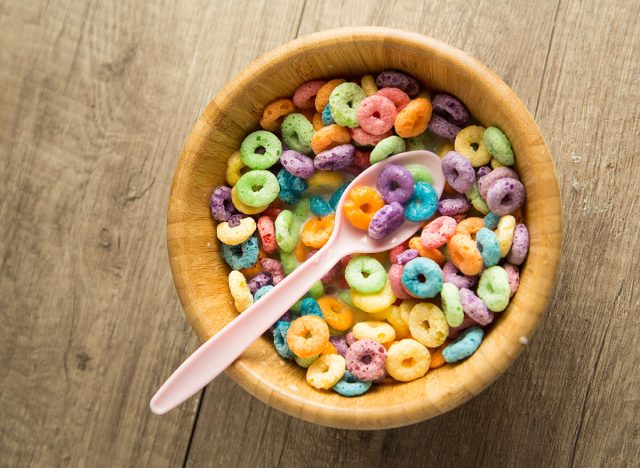
Number nine was "another one that used to be a go-to, and I lost weight doing this with Weight Watchers, with Noom, with several different programs, because it's low calorie," he says. The answer? Breakfast cereal. He says he thought Cheerios, Honey Nut Cheerios, Raisin Bran, and Fruit Loops were "heart healthy," and "I've been a big cereal guy all my life," he says. "Since my weight loss journey, since my health journey, I've come to understand that there are things in those products that cause me problems. They have gluten and carbohydrates, which is not bad in and of itself, but they are processed refined carbohydrates. Highly recommend not to consume it."
RELATED: 9 Steps I Took to Reinvent Myself in 6 Months
Donuts
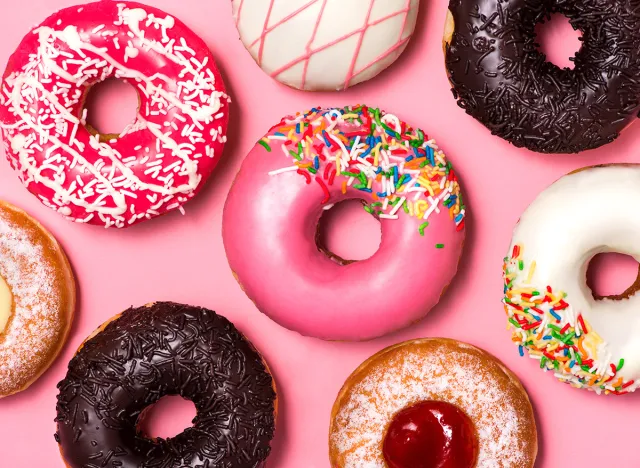
The last item is donuts, which "may be the single worst thing that you can consume," he says. "It is made with sugar and refined processed grains. It is deep fried in a seed oil that is probably rancid. And you're combining fats and carbohydrates together, which is extremely bad for your body because your body can't burn both at the same time." And if you enjoyed this article, take advantage of these 15 Quick Ways to Lose Body Fat Percentage in a Week.
